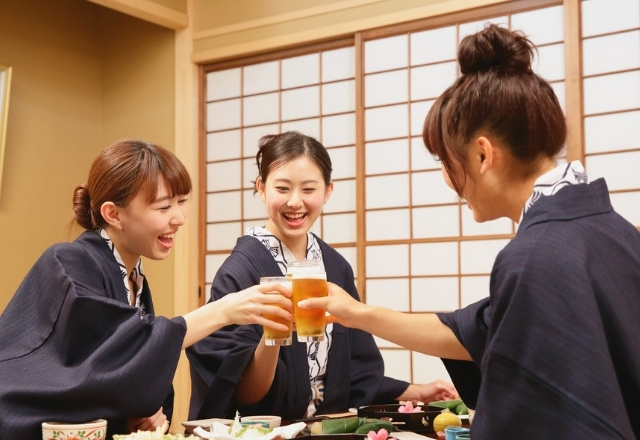If you plan to work in Japan — full-time or part-time — one of the first steps in your job application journey will be preparing a Japanese resume, or 履歴書 (rirekisho). Unlike Western resumes, the Japanese version has a standardized format, certain unwritten rules, and even unique expectations regarding handwriting, photos, and personal details.
In this guide, we’ll cover everything you need to know about writing a Japanese resume and how to make one that stands out (for the right reasons!).
What Is a Rirekisho?
A 履歴書 (rirekisho) is a formal Japanese resume for job applications. It’s typically one or two pages and follows a very structured layout. Most Japanese companies — including part-time employers — expect you to submit one, either handwritten or typed using a template.
Even if you’re applying for a casual or entry-level job, submitting a properly formatted rirekisho shows respect and professionalism in Japan.If you’re unsure what kind of job you want, check out our Ultimate Guide to Finding a Job in Japan or How to Find a Part-Time Job in Japan first!
Where to Get a Japanese Resume Template
- Buy a paper form: Available at convenience stores and stationery shops (like Loft or Daiso).
- Download a digital template: Online versions are acceptable for many jobs. Microsoft Word and PDF formats are standard. Scroll down for a free PDF download of the Japanese rirekisho.
- Use online tools: Websites like Canva or Japanese resume generators offer pre-formatted options.
We recommend that you at least know about the basic Japanese writing system first.
What to Include in a Japanese Resume
Here’s a breakdown of each section you’ll typically see on a rirekisho:
1. Photo (証明写真)
- A professional, passport-style photo is required.
- Dress neatly (business attire), and use a white or neutral background.
- Size: Usually 4cm x 3cm.
- Avoid selfies or casual photos — this is taken seriously in Japan!
Some good examples are:

2. Personal Information (氏名・生年月日・住所など)
You should include the following:
- Full name (use katakana if you’re a non-Japanese applicant; if your name includes kanji, remember to include furigana)
- Date of birth
- Address (including postal code)
- Phone number
- Email address
- Nationality (sometimes optional)
- Visa status and expiry date if you’re a non-Japanese resident
3. Education and Work History (学歴・職歴)
- List in reverse chronological order.
- Use consistent formatting — start with the year and month (e.g., 2020年4月).
- Be concise but clear. No bullet points here — just one-line entries.
- End each section with “以上” to indicate the list is complete.
For example, for education experience, you should write:
| 年月 | 学校名・学部・学科 |
| 2016年4月 | 〇〇大学 経済学部 入学 |
| 2020年3月 | 〇〇大学 経済学部 卒業 |
For example, for work experience, you should write:
| 年月 | 会社名・部署・職務内容 |
| 2020年4月 | 株式会社〇〇 営業部 入社 |
| 2022年6月 | 株式会社〇〇 退職 |
4. Licenses and Certifications (免許・資格)
You should include the following:
- Language test scores (e.g., JLPT, TOEIC, TOEFL)
- Driving license (if applicable)
- Any other relevant certifications
For example, if you have a driving license, you should write:
| 年月 | 免許・資格 |
| 2021年6月 | 普通自動車第一種運転免許 取得 |
5. Reason for Application / Personal Statement (志望動機・自己PR)
This is where you explain:
- Why do you want the job?
- How does your background match the role?
- What skills can you bring to the company?
Be polite, formal, and enthusiastic. Keep it under 200–300 Japanese characters unless otherwise specified.
If it is for “self promotion,” you can write something like:
私はこれまで接客業を中心にアルバイトをしてきました。特に、お客様の立場に立って考えることを意識し、丁寧な対応を心がけてきました。その経験を通じて、コミュニケーション能力と臨機応変な対応力を身につけることができました。今後は、これらの経験を活かし、貴社でもお客様に信頼されるサービスを提供できるよう努めてまいります。
In English, it translates into:
I have mainly worked part-time in customer service roles. In particular, I have always made an effort to put myself in the customer’s shoes and respond with care and professionalism. Through these experiences, I have developed strong communication skills and the ability to respond flexibly to different situations. Moving forward, I hope to apply these skills to provide reliable and trustworthy service at your company as well.
If it is for “reason for applying,” you can write something like:
日本での就業経験を通して、ビジネスマナーや文化理解を深めたいと考えています。御社の業務内容や企業理念に強く共感し、自分の語学力と柔軟な対応力を活かして貢献できると感じました。チームの一員として成長しながら、会社の目標達成に貢献したいと考えております。
In English, it translates into:
Through working in Japan, I hope to deepen my understanding of business etiquette and Japanese culture. I strongly resonate with your company’s mission and the nature of your work, and I believe I can contribute by leveraging my language skills and adaptability. I am eager to grow as a member of your team while helping the company achieve its goals.
6. Commute Time (通勤時間)
How long would it take you to get to the office (in minutes)? This might seem strange, but it’s a standard field in Japan!
7. Dependents and Spouse (扶養家族・配偶者)
Even for part-time jobs, this section is often required. If you’re unsure, ask your employer what to fill in.
Free Download Japanese Resume (Rirekisho) Template
Insert your email to subscribe to our mailing list for weekly information about studying, working, and living in Japan. Download a Japanese resume or rikeisho template for free!
Handwritten vs. Typed Rirekisho: Which Should You Choose?
- Handwritten: Still preferred for many traditional or conservative companies. Shows effort and sincerity.
- Typed: More acceptable for tech, creative, or international companies. Make sure formatting is perfect.
Tip: If you handwrite your resume, avoid correction fluid or messy erasures. If you make a mistake — start over.
Tips for Writing a Strong Japanese Resume
- Use formal Japanese (敬語) if writing in Japanese.
- Double-check kanji and grammar — even small errors can hurt your chances.
- Tailor your reason for applying to each company — don’t copy-paste.
- Attach a cover letter (職務経歴書) if applying for a full-time position or skilled job.
Where to Submit and How
- For part-time jobs: You may be asked to bring the rirekisho directly to the store or office.
- For online applications: PDF format is common.
- Some employers still prefer resumes by mail, so check their website or job listing carefully.
Writing a Japanese resume may feel intimidating at first, but once you get used to the format, it becomes much easier. Taking the time to prepare it correctly can leave a great impression — especially in a culture that values attention to detail.
If you’re just starting your job hunt, be sure to check out:
These guides cover everything from job boards to interview tips — making your Japan job search as smooth as possible.
Interested in finding a job in Japan? Study in Japan to build your Japanese skills!
Coto School Finder is a language school agency that helps people who have wanted to study in Japan for over a year. We provide FREE service to help you find your Japanese language school and obtain a student visa. If you are ready to get started, fill out the form below!
What is a "rirekisho"?
A rirekisho is a standardized Japanese resume format used for job applications. It includes basic personal information, education history, work experience, licenses, and a short self-promotion section.
How is a Japanese resume different from a Western resume?
Japanese resumes are:
- Often handwritten (though typed versions are now common)
- More formal and standardized
- Shorter and more concise
- Include a photo, age, gender (though optional now), and reason for applying (志望動機)
Do I need to handwrite my resume?
No, it’s not mandatory anymore. Typed resumes are widely accepted, especially in international or modern companies. However, for traditional Japanese companies, handwritten resumes can show effort and sincerity.
Do I have to include a photo?
Yes, most Japanese resumes include a recent ID-style photo. It should be:
- Attached in the upper right corner
- Formal (neat clothing, neutral background)
- Taken within the last 3–6 months
Should I include my age and gender?
Many templates include fields for age and gender, but it’s becoming more acceptable to leave these blank, especially for international companies or if you’re uncomfortable disclosing them.
What do I write for "志望動機" (reason for applying)?
Keep it short and clear:
- How your skills/experience match the company’s goals
- Why you want to join the company
- What attracts you to the role
What goes in the “自己PR” or self-promotion section?
his is where you can highlight:
- Your strengths
- Work ethic
- Relevant skills or certifications
- Language abilities
Make sure it ties back to how you’ll be valuable to the company.
Do I need to include my education history from elementary school?
Generally, you start from high school or university, unless you’re a new graduate and want to show a complete academic record.
Is a Japanese resume enough?
Many companies will also ask for a 職務経歴書 (shokumukeirekisho) — a more detailed work history document that outlines your specific job duties and achievements.
Can I use an English resume instead?
Only if the company explicitly requests or accepts it. In most cases, even international companies in Japan prefer a Japanese resume.





